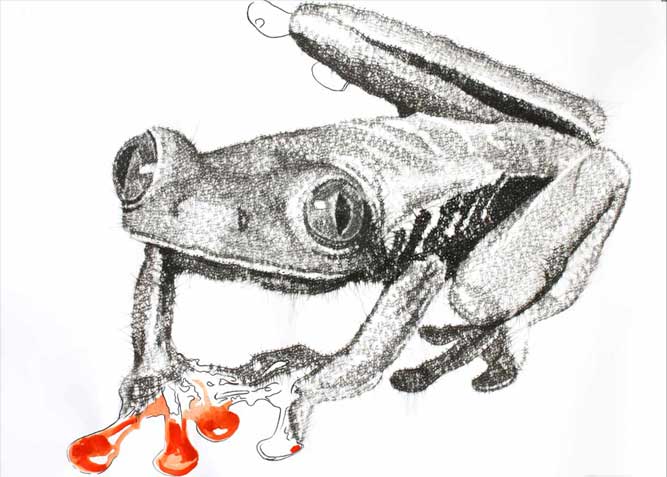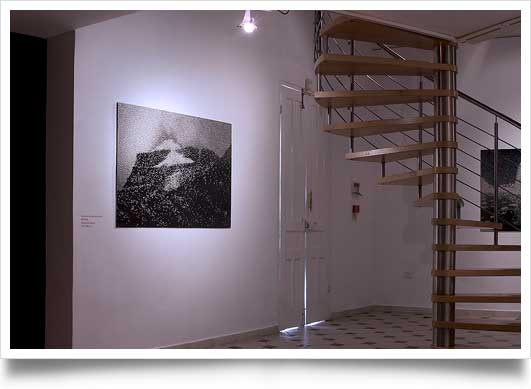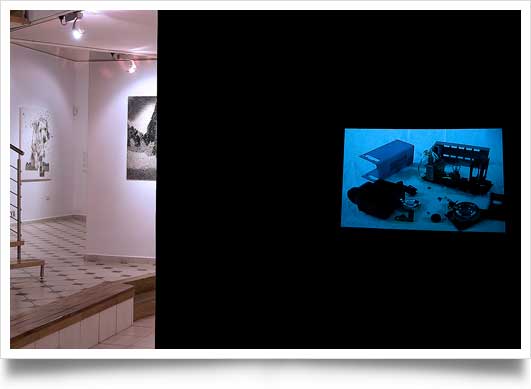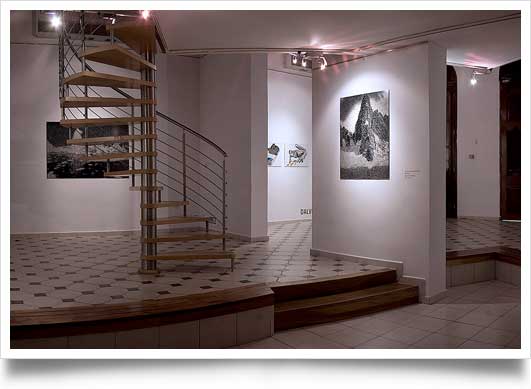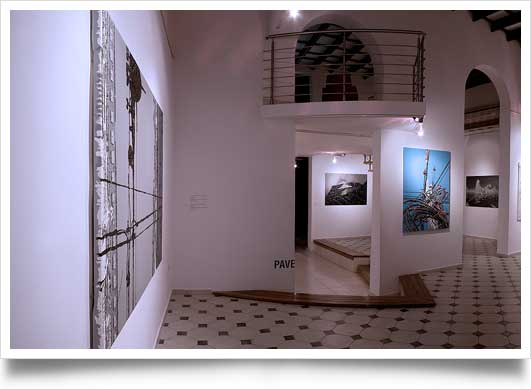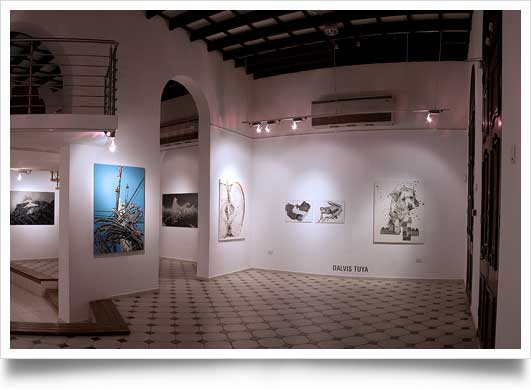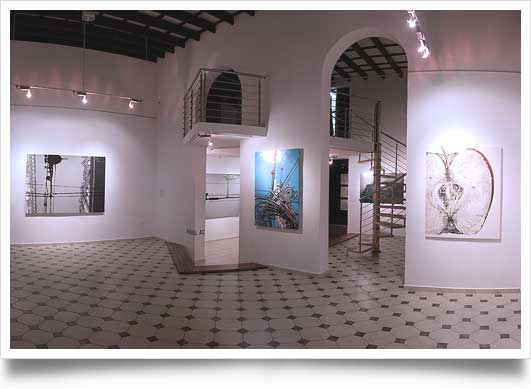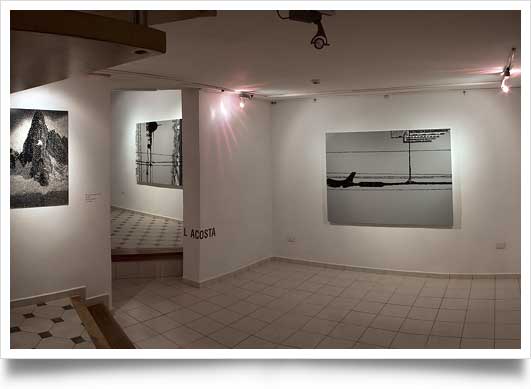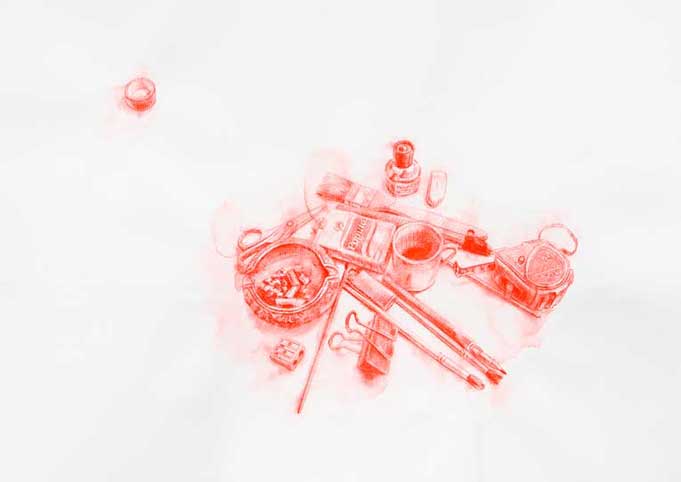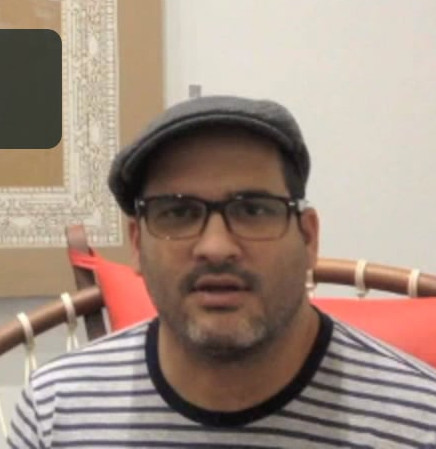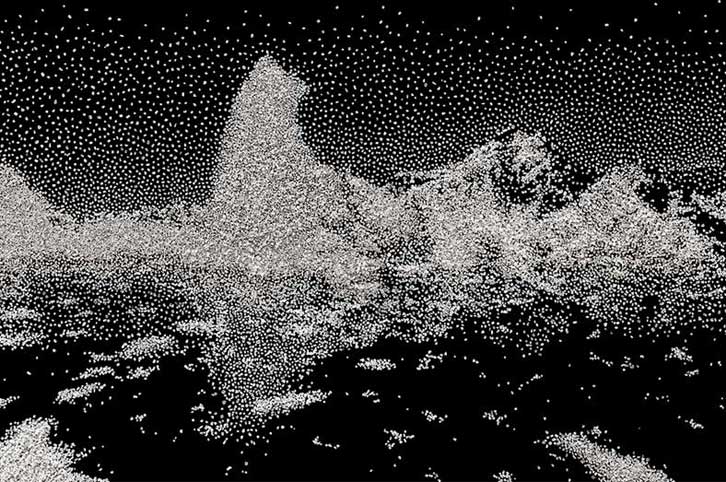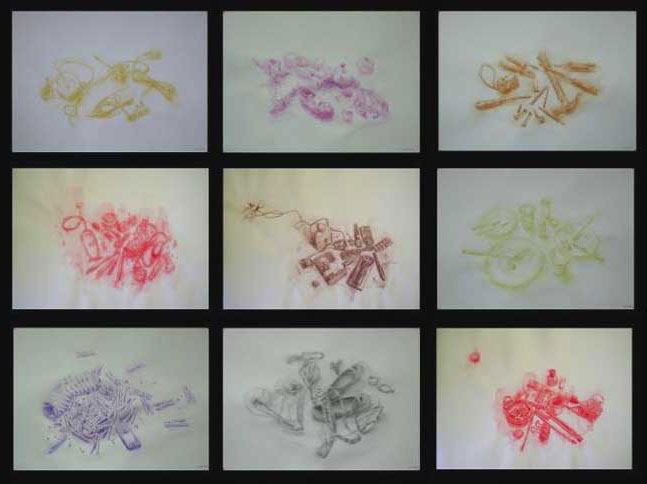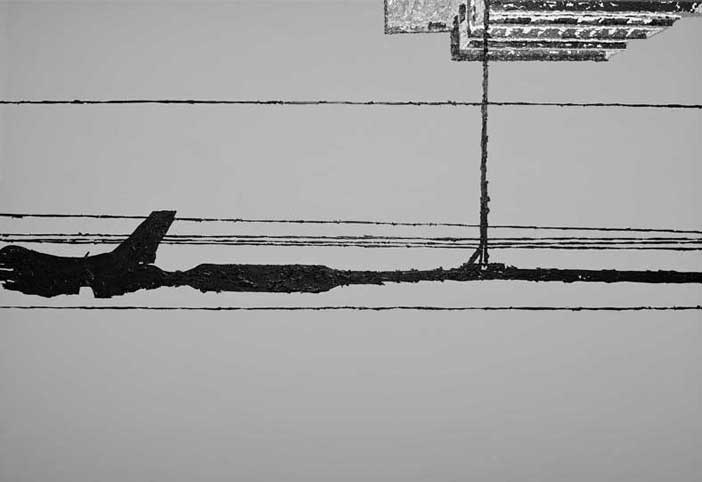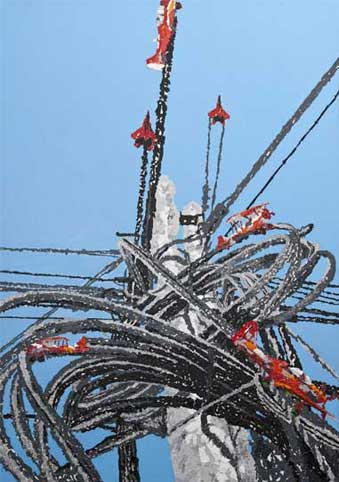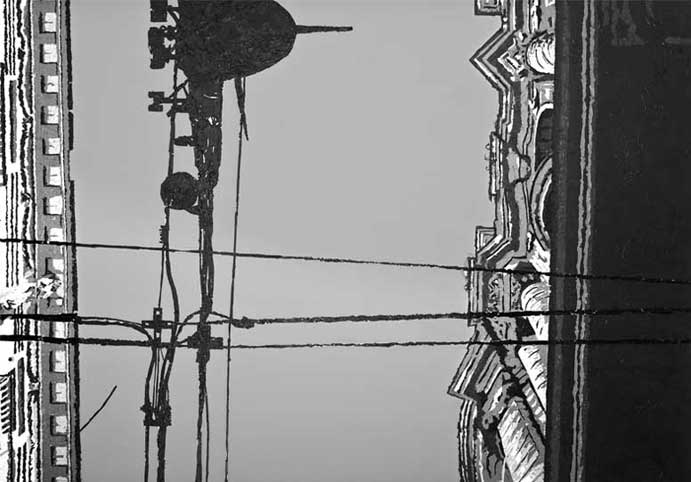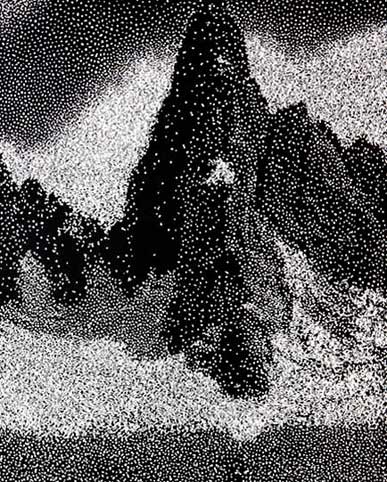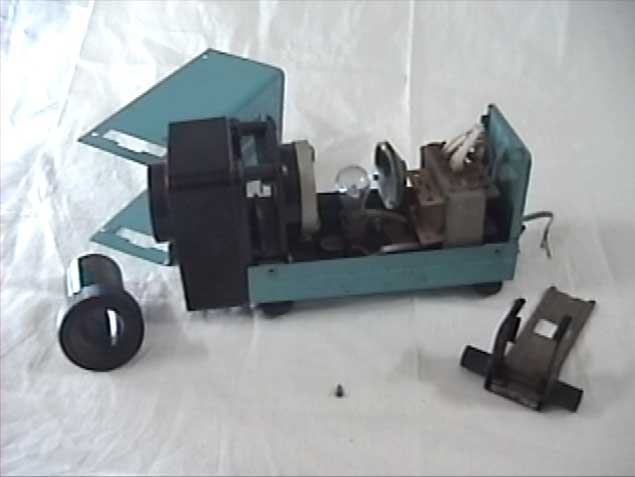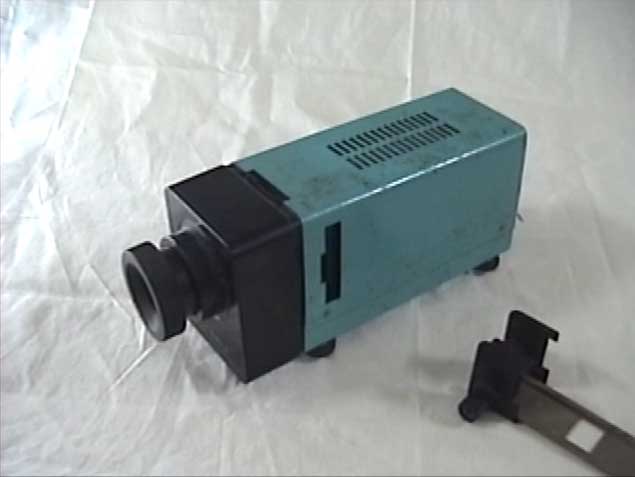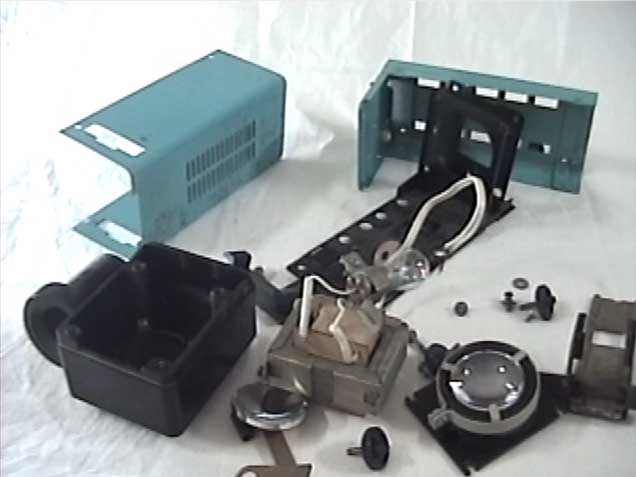Del pí al pá
From PI to PA
Create your own universe along the way
Winston Churchill
The exhibition From PI to PA brings together the work of four artists who, in addition to being old friends, evidence in their works a relationship beyond the conceptual or pictorial, which seems to me is analogous to the dependence link there is between the black and white keys of a piano.
The freshness, the counter shades, the harmonious games, life are supplied by the black keys. They disguise, cross-dress, may be flat or sharp. With the white the melody is harmonious and clear, the sound is more candid, touching, nice, safe. But when concert time comes, sweetness and counter tones unite to arrive at the piece. There is a close dependence between both, without subordination.
In the work of Jairo Alfonso, Pavel Acosta, Dalvis Tuya and Harold Vázquez, each one starts from an idea and concept that, along the creative and representational process distance themselves from the pictorial image seen as finished work, not to discard it, but to start from a consecutiveness and almost graphic reiteration of elements of great significance, to reconvert the meanings of the work. The concept and idea, in their monotonous attempt to multiply themselves, are like the naughty and deceitful black keys that cross-dress to arrive to the finished, quiet, serene and pleasant image of the white keys. And like in the music piece, the functions and meanings hide to give way to a visual work.
The works start out from a concept that grows without transforming, go from a micro idea (human being, object, salt grain or paint fragments) that has life and concept in itself, to a macro (work), apparently distant from the concept of the micro idea and determined by the interaction between the different pictorial results. The final image of the cathedral and the electricity cables is as much important as the paint fragments placed one by one in Pavel Acostas work from the series Stolen Paintings.
Since 2005, Pavel has been faced with searching the limits of social and cultural values. He develops an almost obsessive relationship with the absence, the void, with what ceased to be. He reverts this retirement with actions having to do with space and the concept. At times he exerts the function of passive spectator or trouble-maker, but in this series he became active and the author of the robberies. In the series Stolen Paintings, the process consists in stealing paint fragments from different house doors, cars, city walls, and, using pictorial and chemical processes, creating an art work with them. Each stolen pigment has a history in itself and a connotation that leads to the final image, where the form adopted by the piece after adding the paint fragments produces a different texture. The original concept hides the works texture, conceals it. Something similar happens with Dalvis Tuya.
I first saw her works in the gallery Fresa y Chocolate, during the 9th Havana Biennial. She was exhibiting large-format portraits of characters with aggressive, questioning and rebellious glance. The visual quality urged to approach, and where you expected to see lines, curves and clean strokes
you found that everything was made of small human figures. The infinite repetition of these figures and the application on them of the light and shadow effect accumulated in larger or smaller amount not only formed new images but created new meanings.
In the exhibition From PI to PA she appears to be more confident. She substitutes the need of the direct encounter with the public with waiting and contemplation. He improves the drawing and introduces color in some parts of the work, granting it depth and natural effect. However, these works are not only made of the superposition and multiplication of human figures, but introduce a further constructive element: the Legos. In the drawing from the series Bob Constructs, Dalvis creates a frog with Legos parts, and begins to color it in different parts of the pieces. It would seem as if the frog woke up from a dream and ceased to be silent and black and white, and started to jump. The symbiosis between the two processes of mounting and dismounting, reality and fiction are present, as determinant seal in her creation.
I remember that the video piece X-Ray Photograph, by Jairo Alfonso, took me by surprise. I had seen it before in the group exhibition Vostok made in 2007, and summarized the concept of a research I had been carrying out for some time. At that moment I thought it contained the essence of the sample I wanted to make on this theme. The cardboard drawings are an extension of the representation of the video story, restricted to the space of the home, of the well-known things. By putting together several objects, Jairo identifies the different personalities that coexist in the same space. His work has been molded by the search of identity, of who we are and what defines us. In the series Memory Exercise he searched on the subject of his origin, his childhood, his memories as a child, when coffee was the door you could go through and everyone let you in. It is evident, both in his video production and in his bi-dimensional work, that the family tradition is important and defines him. Jairo Alfonsos drawings speak of the persons that surround him in his daily life. The form of representing them is the union of a group of objects that speak of a personality, of a character, of an identity. Always representing the union of several objects, each one with its concept and interpretation, which, when united to other objects, tell a different story.
Harold Vázquez starts from the use of images of already disappeared glaciers which he obtains from the Internet. This representation by an image of something that no longer exists, like the replacement of the ghost by death, is an important part of the concept of his creation. During this process he simulates an image that no longer exists in a reproduction, with an element (salt) which he copies in serial form, reconverting the works meanings.
Although the artist considers it an instrument at his service, and I quote: Salt is invoked in its aseptic quality to produce an emptying that alludes a certain type of death created in the serial nature and overlapping of information and images, the use of salt as narrative element of the image places it in a state of lack of temporality in history. Salt is a substance in crystal form; it has an important role in the history of mankind and nature. It symbolizes wealth, blessing and prosperity in many cultures. In our culture, in these moments of contemporariness, salt symbolizes the wicked, what you must leave behind, bad luck, the curse. This grants the work another reading.
The work of Jairo Alfonso, Dalvis Tuya, Pavel Acosta and Harold Vázquez insist on the representation of images through the multiplication and serial nature of ideas and concept for the conversion of the meanings in the final work. But undoubtedly, both the idea and initial concept and the final work possess equal importance when interpreting, studying and researching the meaning and far-reaching effect of the piece and of the exhibition.
Solveig Font Martínez
Specialist
Galería Villa Manuela
UNEAC
Artworks
